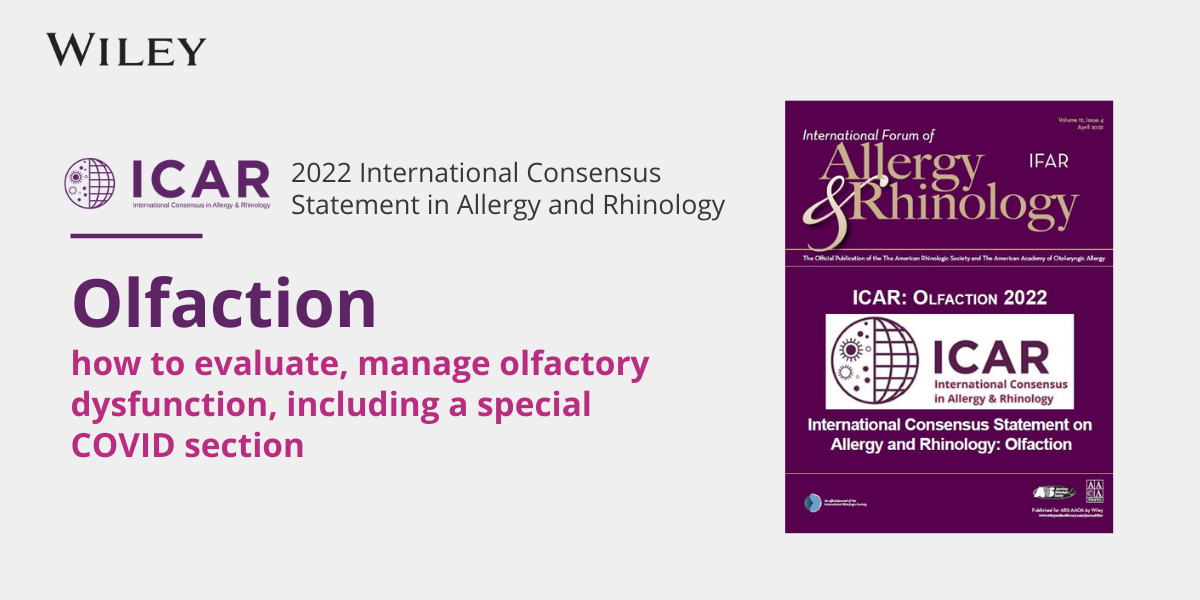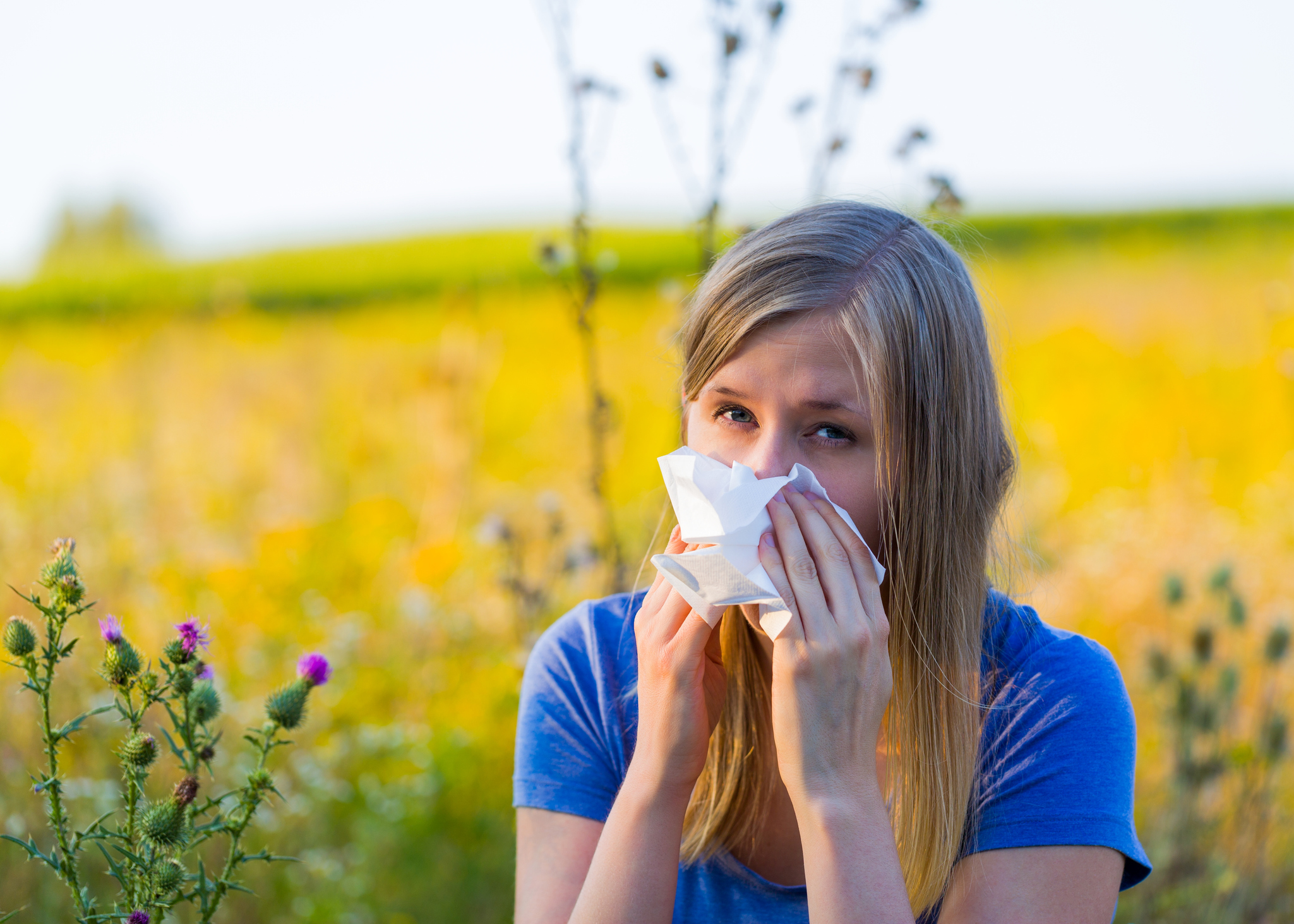Join Haidy Marzouk, MD, FAAOA, and Nalin Patel, MD, FAAOA as they delve into the most frequently asked questions in pediatric ENT. This insightful discussion covers a range of topics that concern both parents and medical professionals, providing expert advice…
Cross-Reacting Foods, Oral Allergy Syndrome, or “Why Do Bananas Make My Throat Itch in the Fall?”
By Alfred M. Sassler, DO, FAAOA, FACS
Many people with seasonal allergies know they are sensitive to pollens that increase and decrease in prevalence at different times of the year depending on the climate where they live. Sometimes called “Hay Fever”; people may react to one or more tree pollens, weed pollens, or grass pollens and develop the classic allergy symptoms.
Some have also noticed a strange phenomenon where eating certain foods seems to trigger throat symptoms such as tickling or tightness in the throat or throat clearing and cough. Or they may note even more typical inhalant allergy symptoms like sneezing, runny nose, and post-nasal drainage. This may lead to the belief that they are “allergic” to those foods. Does this happen to you? Have you observed any trends in these symptoms? Do these reactions happen every time you eat the food or is it more likely these reactions don’t necessarily happen all the time? Do they seem to correlate to times when seasonal allergy symptoms are more prevalent?
What’s going on here is a quirk of our immune system called co-allergy or cross-reactivity. The response has lots of names: “Oral Allergy Syndrome,” “Pollen-Food Allergy,” “Concomitant Allergy,” and “Pollen-Associated Food Allergy Syndrome” to name a few.
For an allergy response to occur, a group of cells that act as the “sentries” or “bouncers” of our immune system called “mast cells” must somehow be notified that we have come in contact with a substance that for some reason our body recognizes as not part of us (“non-self”) and potentially harmful. When that happens, they are programmed to release chemicals including histamine and others that trigger a series of reactions that serve to eject and/or destroy that substance.
The way these mast cells identify these “foreign invaders” (or those substances that are “not on the list to get in”) is by having specific receptors on their surface called antibodies (IgE) that will link up with specific segments of the DNA chains that are integral parts of pollen molecules (mostly proteins) that have come into contact with that person. DNA of course, is the basic component or “computer code” of life and the basis of all proteins that make up all life forms including people, animals, plants, their pollen, bacteria, fungi, etc.
Example of a Protein Molecule
Our guardians (mast cells and others) are in highest concentration in the parts of the body that are most likely to come in contact with the outside world such as the skin, nose, sinuses and oral mucous membranes, membranes covering the eyes, the upper and lower airways, and the GI tract. When these “sentries” are engaged and the “invaders” (most often pollens that arrive through the air) link up with their surface receptor antibodies, they release their entire weapon system to cause the all-too-familiar reactions we call “allergy”. These may include itchy, red bumps on the skin (hives), itchy/runny nose, sneezing, itchy/runny eyes, swollen inflamed eyelids, itchy throat, throat clearing, increased mucus in the airway, cough, wheezing, throat tightness, hoarseness, etc.
Now for the really interesting part! Many people get a similar reaction when they eat specific foods. For example, people who exhibit allergy to birch tree pollen may notice many of the same reactions when they eat peaches, pears, kiwi, apples, and some other foods. What seems to happen is a miscue to our immune system. When the digestion process starts, those foods get broken down into their basic components by our GI tract, starting with chewing and saliva action in the mouth. Some of the food proteins contain DNA chain segments that align very similarly to those of the pollen molecule DNA that are programmed to link to the antibody receptors on the mast cells. Well, when those similar DNA chain segments match up closely enough to the pollen antibody receptors on the mast cell surfaces, they are “fooled” into cross-linking and then releasing their arsenal of chemicals (histamine and others) and the allergy response is triggered. This response is most often felt in the throat but can encompass the entire spectrum of allergic responses noted earlier.
We have recognized many such cross-reactions. Another commonly noted one is ragweed pollen sensitive folks may get these reactions when eating melon or banana. Dozens of these reactions have been recognized, and many have been studied at a molecular level. Sure enough, each time we see similar DNA chain segments between the pollen and the broken-down foods that are very similar and are capable of “cross-linking” with the mast cell surface receptor antibodies, we note a triggering release of the allergy causing chemicals.
This is definitely not an exact phenomenon and here’s why. It is a matter of percentage and chance. When allergic patients are exposed to their allergens, this system gets ramped up by the body that thinks it’s in a battle with something that causes harm (disease). That means more sensitized mast cells will be available to look for “the enemy.” Remember, they are programmed to react to specific substances based on their surface receptors. If you are ragweed-pollen sensitive and there is lots of that pollen in the atmosphere, say August and September in the Northeastern US, you will have lots of ragweed sensitized mast cells around looking for this stuff. If the surface receptors come in contact with a bit of DNA that is 80% similar, that may be enough to trigger the response in some mast cells during the ragweed season. If it’s winter and you are eating a nice cantaloupe that just got shipped to your local grocery store from South America, you might not even have the reaction. The reason is that you don’t have as many ragweed-sensitive mast cells available since you aren’t currently contacting that pollen in your home environment and the cross-reaction isn’t perfect so not enough mast cells “go off” for you to notice much of a response.
It gets even more complex. Those of us who do have allergy to ragweed, as an example, will have variable allergic sensitivity because we may be more or less sensitive to different parts of the ragweed molecule (known as “major proteins” or “epitopes”: those little segments of DNA chains mentioned earlier). This is why some of us seem to be more or less allergic at varying times to the elevated pollens in our environment. Pollens are biologic products that may vary slightly from crop-to-crop, year-to-year, and season-to-season. They may contain more or less of these specific bits of DNA chains. Again, the response has to be fairly specific for the specified surface receptors on the mast cells to recognize them as “the enemy.” So if the pollen molecule or the cross-reacting food that we eat doesn’t break down to a closely enough related DNA strand…. no response!
If you have seasonal allergies, you are likely to have an “ah hah moment” when you look at some of these foods and others will make you scratch your head. This is not a universal phenomenon for the reasons mentioned above so trial and error might be in order. It is highly unlikely that cross-reacting foods would cause anaphylaxis. If you are not being exposed to your inhalant allergen, you may not notice the response so it may have to be tried while “in-season.”
A word of caution: If you are undergoing immunotherapy to desensitize yourself to pollens, you are actually getting small amounts of the very thing you react to in order to “fool” your immune system to become less sensitive. If you also eat cross-reacting foods simultaneously to being exposed to those inhalants in your environment, you may notice greater reactions from your allergy shots or sublingual allergy treatment (drops or soluble tablets). It is advisable to avoid known cross-reacting foods when you are undergoing allergy immunotherapy and are also in-season for your allergies.
Look at trusted online sites or speak with your ENT allergy office for lists of potentially cross-reacting foods.





